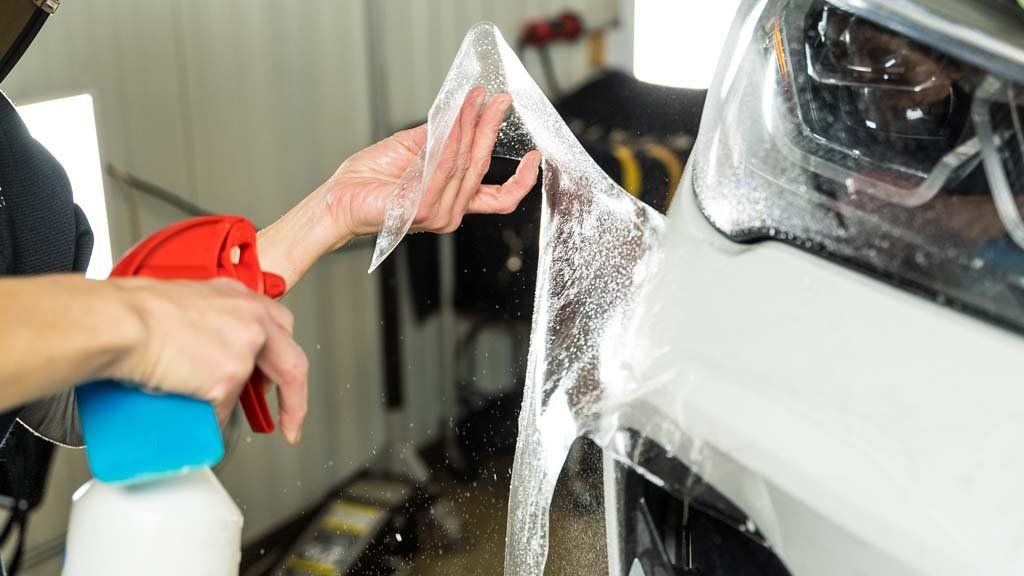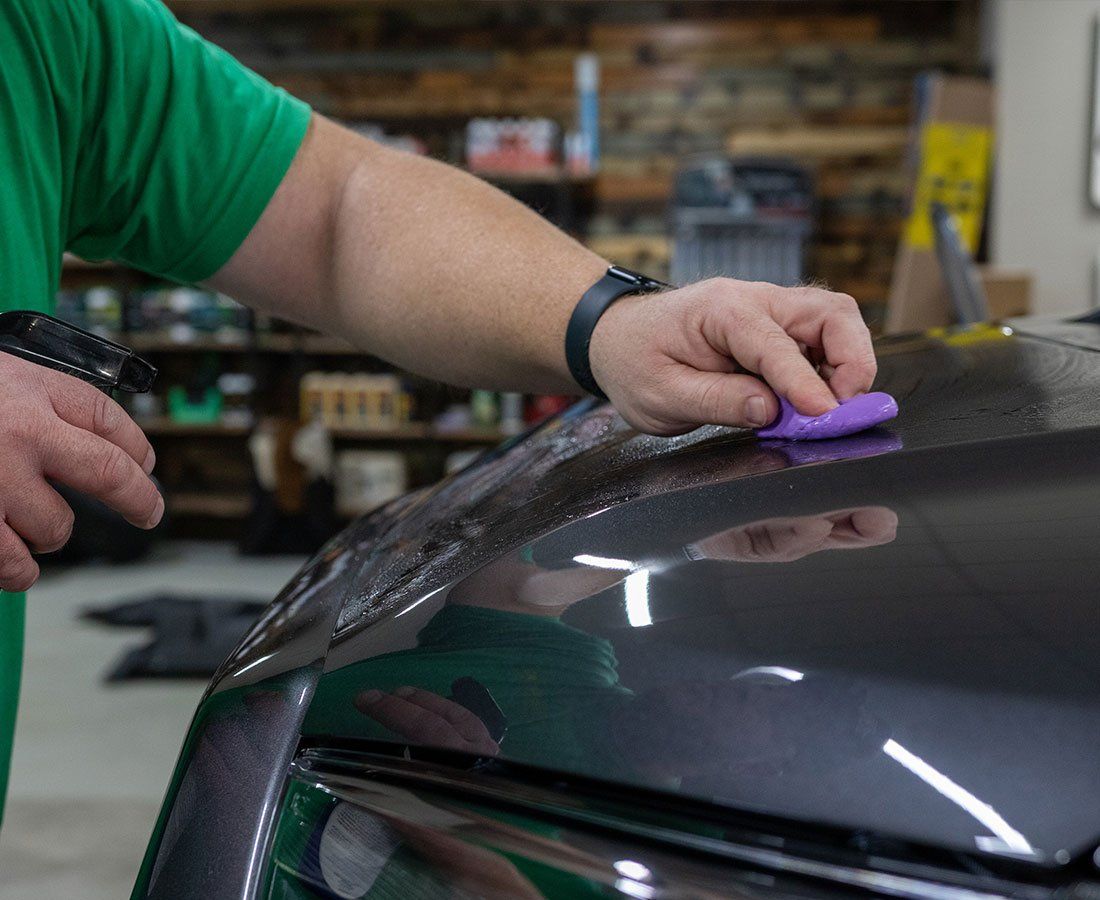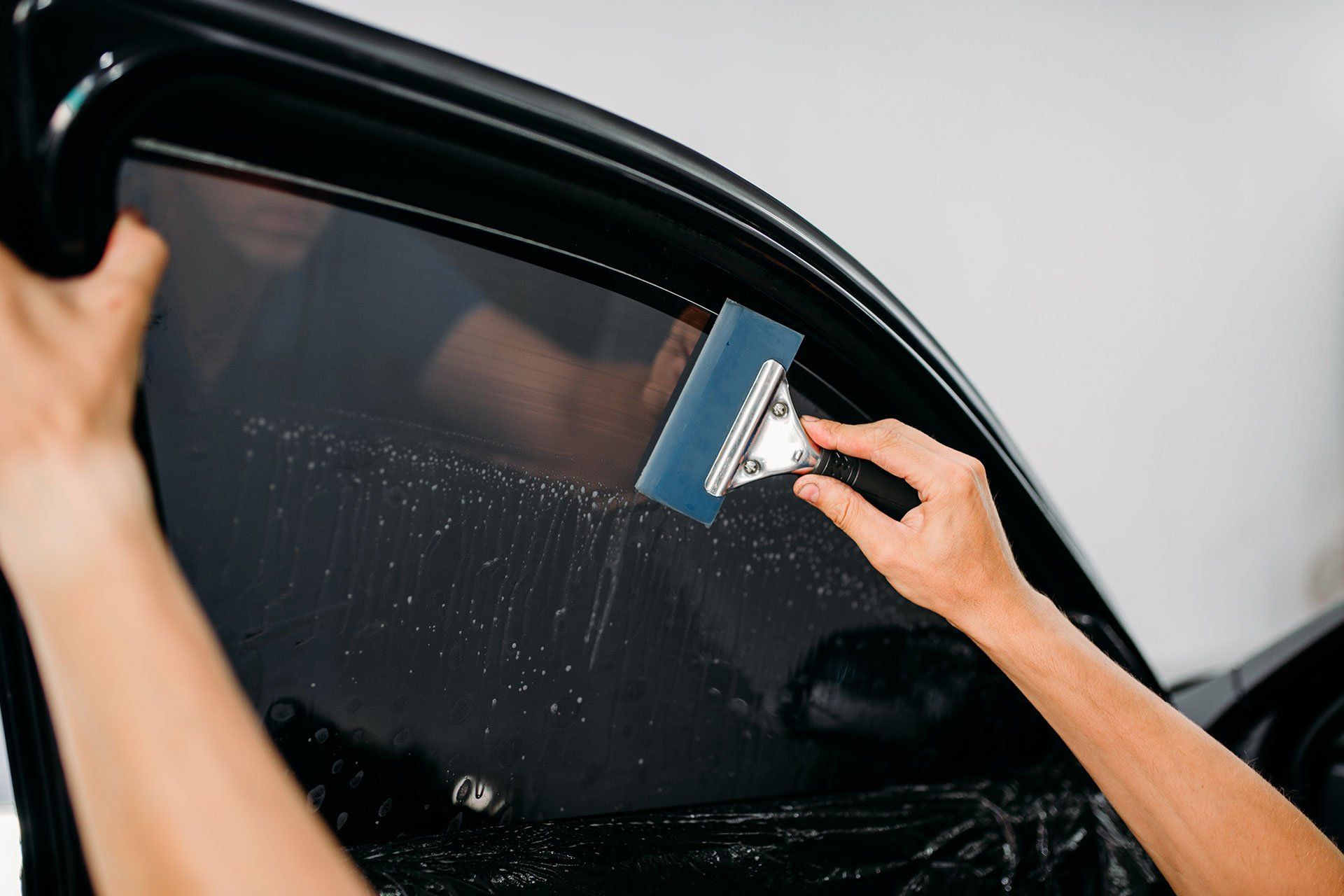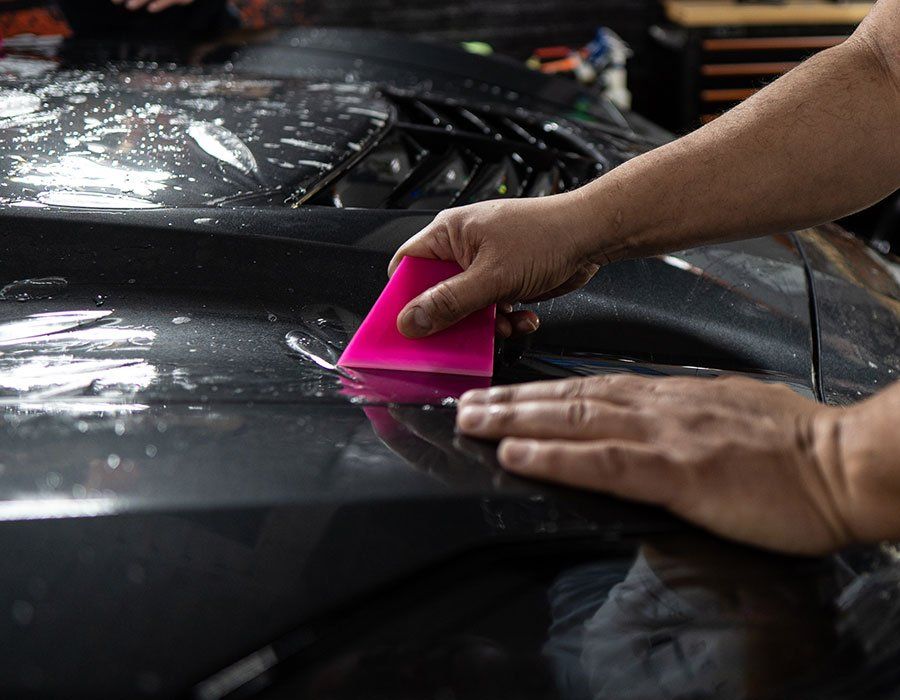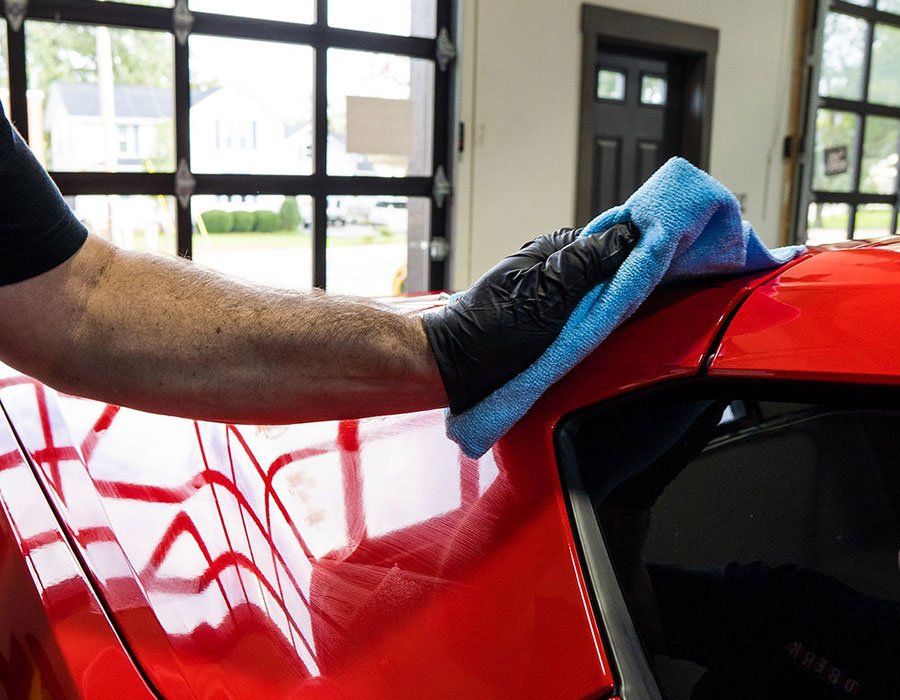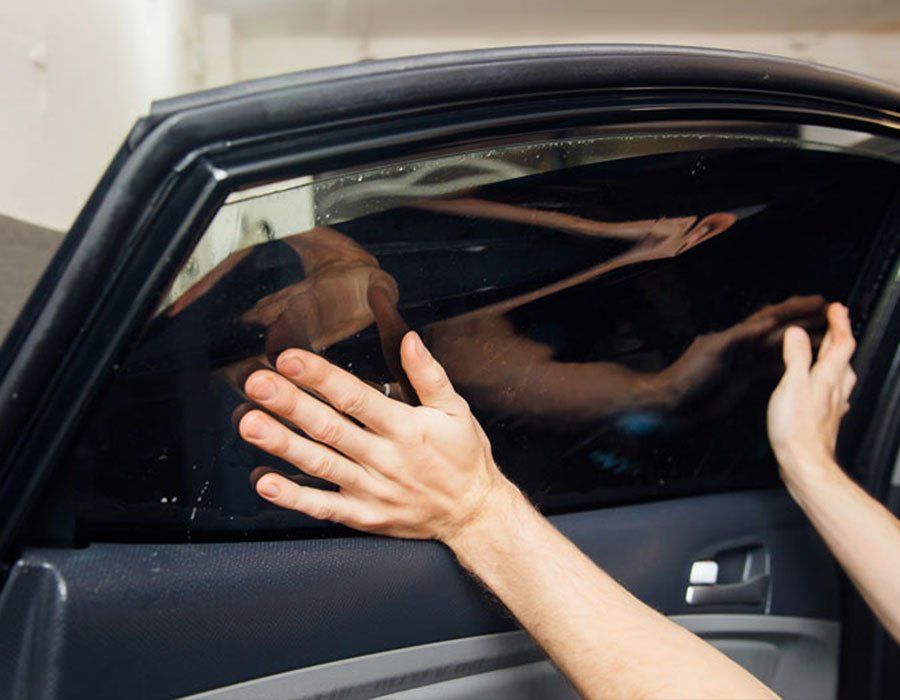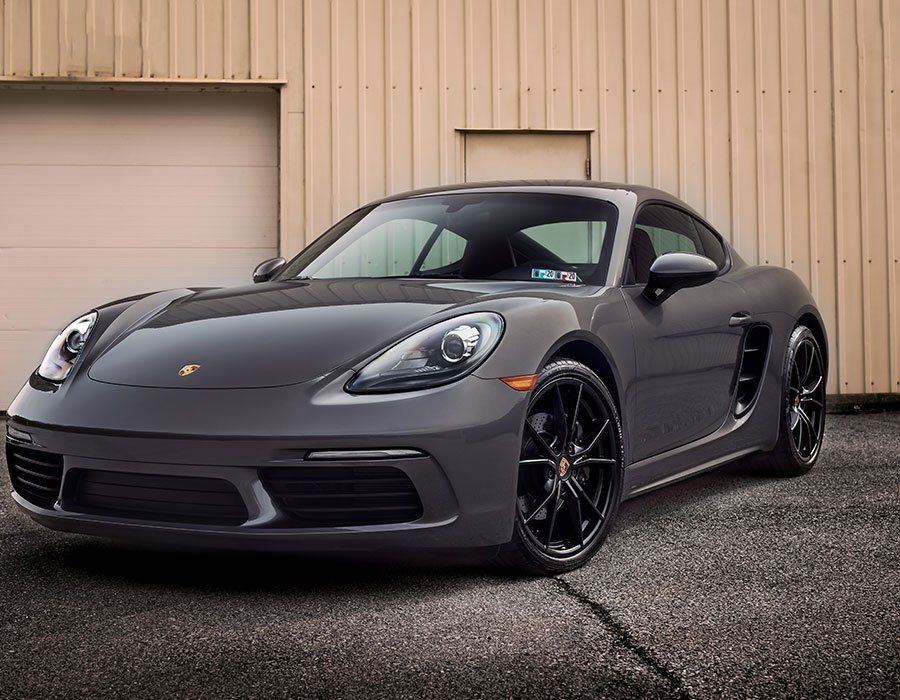Ceramic Coating vs. Waxing: Which is Better for Your Car's Protection?
CALL (727) 940-2340
SCHEDULE NOW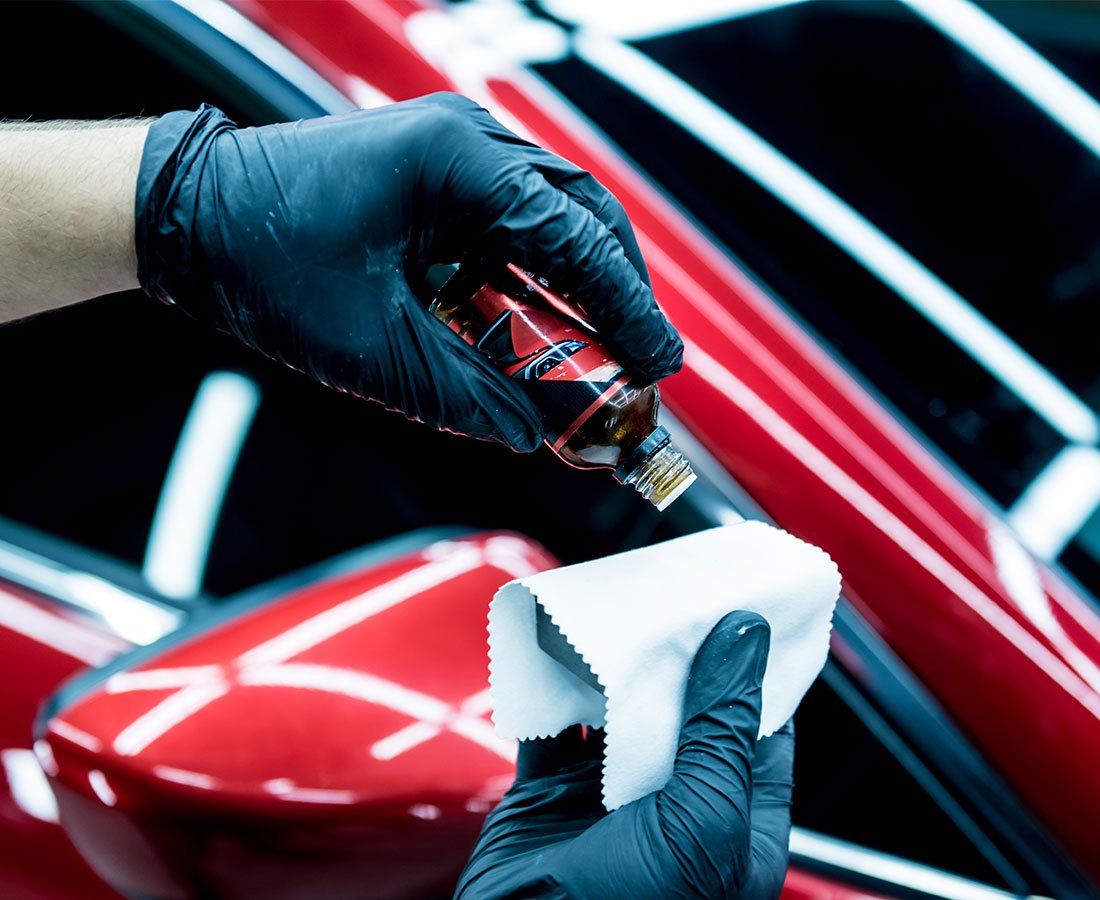
We all want to keep our vehicles protected and looking their best, no matter how old they are, but how do we do it? Waxing our cars is a classic tradition that has been used to protect and prolong the life of our vehicles; however, ceramic coating has been gaining fame as a new and improved alternative. But which is better for protecting our prized possession? Let’s explore the differences between ceramic coating and waxing and the pros and cons of each to determine which is the right choice for you.
The Ceramic Coating vs. Waxing Debate
The debate between ceramic coating and waxing has been a controversial topic ever since the introduction of ceramic coatings. On the one hand, waxing has long established its use as an efficient form of protection to preserve the original look and feel of your car’s paint. Wax is simple to apply, requires minimal upkeep, and is generally quite affordable. Many enthusiasts prefer the waxing approach because it allows them to customize the appearance of their vehicle with tinted or special polishing waxes.
Ceramic coatings, on the other hand, offer a comparatively more permanent layer of protection. Ceramic coatings are made up of silica-based particles that bond to metal surfaces, creating a semi-permeable protective layer that can last for up to five years. While ceramic coatings do require a bit more time and effort during installation, they provide superior protection from environmental elements such as UV rays and acid rain.
Ultimately, it’s important for drivers to decide for themselves what type of protection is best for their particular situation. Considering each option thoroughly will help ensure your vehicle continues to boast its pristine condition. Having said that, let’s take a closer look at the advantages offered by waxing your car so you can make an informed decision on how best to keep your ride looking like new.
Benefits of waxing your car
When it comes to waxing your car, there are plenty of benefits that come along with the process. The most obvious benefit is the aesthetic improvement it brings to your car's paint job. Waxing rejuvenates and amplifies the bright colors of paintwork and even helps to keep them protected from harmful UV rays. Additionally, waxing can enhance your car’s shine by smoothing out imperfections in the paintwork and protecting it from minor scratches and other damage caused by everyday driving on roads.
The application and removal of a car wax also function as a form of maintenance for your car’s paint by removing dirt from its surface, giving you an instant boost in shine after every treatment. It is much faster and simpler to do than ceramic coatings; you only need to apply it and then buff it out afterwards. Waxing can be done with much less time involved than polishing or applying a ceramic coating, and depending on the type of wax used, it often only needs repeating every 4-6 months. This makes waxing a much more attractive option when it comes to convenience and effort.
On the other hand, some people criticize waxes for not offering enough protection when compared to ceramic coatings, which can last several years before needing servicing. Therefore, if you’re looking for long-term protection for your car’s bodywork, ceramic coating may be a better option for you than simple waxing. That being said, regular wax applications can help maintain a small layer of protection without too much additional hassle, which many drivers prefer over dealing with longer-term but large investments such as a ceramic coating.
Overall, both ceramic coating and waxing have their advantages and disadvantages when it comes to protecting your car from environmental threats. Ultimately, each respective option should be judged on its individual merits as technology continues to progress, allowing more advanced solutions for cars old and new alike. However, for those who are looking for convenient short-term protection combined with an admirable aesthetic improvement, auto-care experts unanimously agree that waxing is an excellent choice that won't disappoint!
In any case, while waxing has proven itself to be highly beneficial in terms of superficial improvements and short-term protection, there is another popular option that may be even more effective in providing long-term care, known commonly as ceramic coatings.
Benefits of ceramic coating your car
When it comes to the benefits of ceramic coating your car, there are a few key advantages that make it far more appealing than waxing. Firstly, the application of a ceramic coating only requires a single visit to the detailer and lasts much longer than waxing. Generally, you can expect a ceramic coating to last up to 2–3 years with proper care and maintenance, while waxing needs to be applied every 6 months or so in order for it to provide good protection against dust, dirt, and other environmental hazards.
The coating creates a slick surface that is smooth to the touch, dirt has less chance of attaching itself to the paint, which in turn helps maintain the shine. Not only does this help keep the car looking newer for longer periods of time, but it also keeps it well protected from damage due to inclement weather conditions or UV radiation.
Finally, ceramic coatings will not wash away like wax as soon as they come into contact with water. This makes them perfect for climates where it rains frequently or high humidity levels are present throughout much of the year. Even if exposed to water routinely, ceramic coatings will stay intact even after several washings.
These advantages over wax show why many car owners prefer ceramic coatings. However, it is important to consider all aspects of both waxing and ceramic coating when selecting which one is better for long-term protection, as each has its own benefits depending on individual preferences and specific situations. Regardless of preference, both methods can help protect your vehicle’s exterior from harm in different ways. To learn more about evaluating which method is best suited for your car's longevity, please see our next section devoted to this topic.
Evaluating the Longevity of Your Car's Protections
When it comes to deciding between ceramic coatings and waxes for your car, you should also consider evaluating the longevity of the protection.
Ceramic coatings are considered to be more durable than waxes in terms of protection over a longer period of time. While waxes may require regular maintenance, ceramic coatings tend to last much longer and can protect the surface of your car from dirt, dust, and other environmental elements better than waxing can. There are some defects that are necessary with waxing, such as needing to reapply every few months; however, ceramic coatings have proven to be effective in protecting your car’s exterior for up to five years when applied correctly.
On the other hand, wax can also provide a durable layer of defense against debris on paintwork as well as luster to the finish. It is considerably less expensive compared to ceramic coatings, although it often needs reapplication several times throughout the year. Both ceramic coatings and wax have their own pros and cons regarding longevity of protection, but overall, it appears that ceramic coatings offer more consistent long-term performance with fewer drawbacks.
The decision between ceramic coating or waxing your car should ultimately come down to factors like budget, location (coating requires a warmer temperature), vehicle use, and pre-existing damage or toxicity in order to make an educated judgment about which will provide the best protection for your vehicle over time. In conclusion, if you’re looking for a long-term solution with low maintenance requirements, then ceramic coating is likely a better option for you than traditional waxing methods. Now that we've discussed how to evaluate the longevity of your car protections, let's look at whether or not ceramic coatings or waxes are long-lasting in their own right.
Ceramic coating is considered to be a more durable protection against dirt, dust, and other environmental elements than wax and can last up to five years when applied correctly. Wax, on the other hand, can provide a durable layer of defense and luster to the finish but may require regular reapplication. Ultimately, the decision between ceramic coating or waxing your car should depend on budget, location, vehicle use, and pre-existing damage or toxicity in order to get the best protection for your car over time. Ceramic coating appears to be a better long-term solution with lower maintenance requirements.
Are ceramic coatings or waxes long-lasting?
When evaluating the longevity of ceramic coatings versus waxes, there are several factors to consider. When compared to ceramic coatings, which some claim can last up to five years, waxes appear to offer a more transient solution for car protection.
It is true that waxing typically requires more regular applications, with a range of two to four months recommended for optimal performance. By contrast, the application of a ceramic coating is intended to provide protection from oxidation and fading for multiple years if properly maintained. However, this does not mean that waxing will not last as long. Wax protection can be extended between applications with proper maintenance and cleaning of the surface using a non-abrasive cleaner or clay bar, depending on the level of dirt accumulation.
Ultimately, both ceramic coatings and waxes can offer features like UV protection and slickness, but their longevity will depend on the type of product used, how it is applied, and the quality of maintenance afterward. However, in situations where longer-term results are desired, ceramic coating is likely the better choice due to its ability to hold up over time even with minimal upkeep.
No matter which option you ultimately choose for your car's protection, it is important to properly maintain it in order for it to perform optimally for as long as possible. With that said, we can conclude that ceramic coatings or waxes can each be considered reliable solutions depending on how often you are looking to reapply them and your commitment level towards maintaining them throughout their lifespan. The next section will determine which one provides better automotive protection overall.
Which is better for automotive protection?
When it comes to choosing the best protection for your car, ceramic coatings and waxing both have their advantages. Ultimately, the choice depends on several factors, such as your budget, desired level of protection, and how long you want the protection to last.
Waxing is the traditional approach to automotive protection. It provides an aesthetic benefit by giving your car a glossy finish and protecting it from minor scratches. Wax also helps protect against UV damage. However, waxes tend to break down more quickly than other forms of protection due to wear and weather conditions. Additionally, waxes don’t offer much in terms of durability against contaminants like oil, acid rain, and bird droppings.
Ceramic coatings provide a much higher level of protection compared to wax. These coatings are applied as a liquid solution to your car’s exterior and can resist heat up to 1200 degrees Celsius. They form an artificial layer above the paint, which prevents many small scratches, chips, fading, and rust caused by normal wear and tear. Ceramic coatings are extremely durable and will last between two and five years with proper care. Additionally, they are hydrophobic, which keeps water away from your vehicle's body, allowing for easy cleanup.
Ultimately, it’s up to you which product you decide to use for protecting your car’s exterior. For short-term protection with a glossy shine, waxing may be the best option since it is cheaper and easier to apply. On the other hand, if you want a durable coating that will last longer than typical waxes, then ceramic coating is likely your better option.
Answers to Commonly Asked Questions
Are there any other car paint protection solutions that compare to ceramic coating and waxing?
Yes, there are a few other car paint protection solutions that compare to ceramic coating and waxing. Paint sealants, for example, are a popular alternative to ceramic coatings and waxes. They work by embedding themselves into the microscopic pores and valleys of your car's paint job and forming a long-lasting barrier against the elements and UV rays. These sealants also contribute to the improved shine, depth, and clarity of your vehicle's paint over time. Additionally, nano-ceramic coatings have become increasingly available in recent years. When compared to traditional ceramic coating application methods, these nanoceramic coatings offer superior hardness and dirt repellence without leaving behind any chemical contamination or residue. Ultimately, it will depend on your personal preferences in terms of durability, maintenance frequency, and budget when choosing between ceramic coatings, waxes, and paint sealants.
How does ceramic coating differ from waxing in terms of durability and cost?
Ceramic coating and waxing both help protect car paint from damage, but they differ significantly in terms of durability and cost. Ceramic coatings provide a much longer term of protection than waxes. Wax typically needs to be reapplied every few months, while ceramic coatings can last up to two or three years, depending on the type of coating and the environment it’s exposed to. With a ceramic coating, you can expect better long-term performance for protection from dirt, grime, and corrosion than with wax.
Ceramic coating is also more expensive than waxing. While the initial investment for ceramic coatings may be higher than that of waxes, it will save you money in the long run by not having to regularly purchase replacement supplies of wax or pay to have your car re-waxed. That said, if you’re on a budget and don’t mind spending time frequently reapplying wax over ceramic coatings, then wax might make more economic sense for you.
What are the pros and cons of each option for car protection?
Ceramic coating and waxing both have their pros and cons when it comes to providing protection for your car.
The biggest benefit of ceramic coating is that it can provide long-term protection for up to 5 years, often much longer than traditional waxing. Not only that, but ceramic coatings are also highly resistant to UV rays, abrasions, and chemicals. This means they stand up to even the toughest car-washing detergents and prevent long-term paint damage from the sun’s harsh radiation.
However, it tends to be more expensive than waxing and requires a lot more work to apply properly. It must be done correctly, or else it won’t provide the desired level of protection.
When it comes to waxing, the main pros are that it’s quick and inexpensive. You can wax a car in minutes with a few basic supplies and have a nice shine in no time. Wax can also protect against minor scratches and other environmental dangers like bird droppings and tree sap.
The downside is that wax doesn't last as long as ceramic coating—typically not more than 6 months or so—so you must make sure to reapply often to keep your car looking good. Additionally, wax does not provide any kind of UV protection, so if you leave your car out in the sun for too long without reapplying the wax, you may find yourself with a faded paint job down the road.
Top-Notch Ceramic Coating Service in Tampa and Tarpon Springs, FL
Auto Film Guys is a premier automotive detailing and protection company that offers
top-notch ceramic coating services in Tampa and Tarpon Springs, FL. Our team of highly skilled professionals uses the latest technology and techniques to provide the highest quality ceramic coating services that offer long-lasting protection for your vehicle's exterior. With a commitment to excellence and attention to detail, our team at Auto Film Guys is dedicated to providing exceptional customer service and ensuring that each customer's needs are met with the utmost care and satisfaction. Our ceramic coating services are designed to protect your vehicle from scratches, UV rays, environmental contaminants, and other forms of damage, leaving it looking new for years to come. If you are looking for a reliable and experienced team to protect your vehicle, Auto Film Guys is the perfect choice.
The Auto Film Guys Blog
